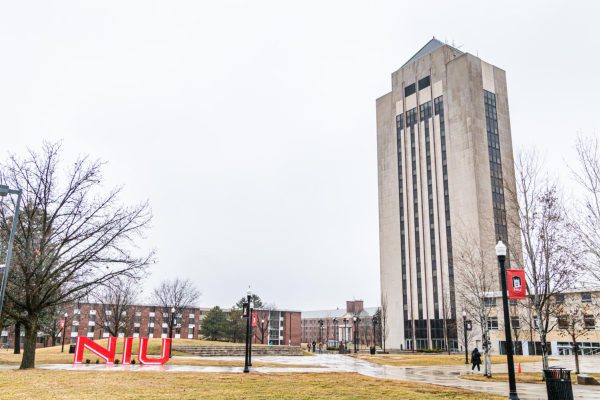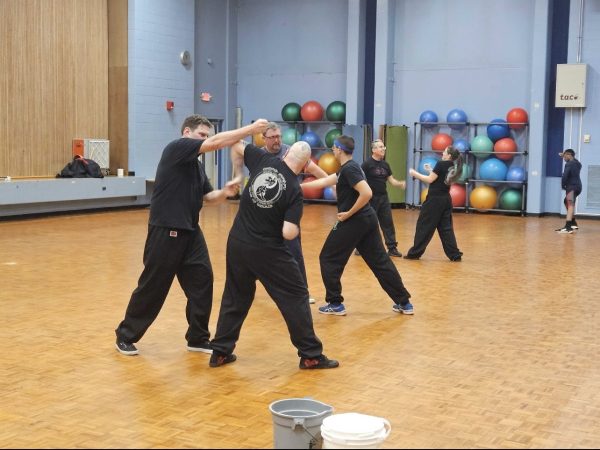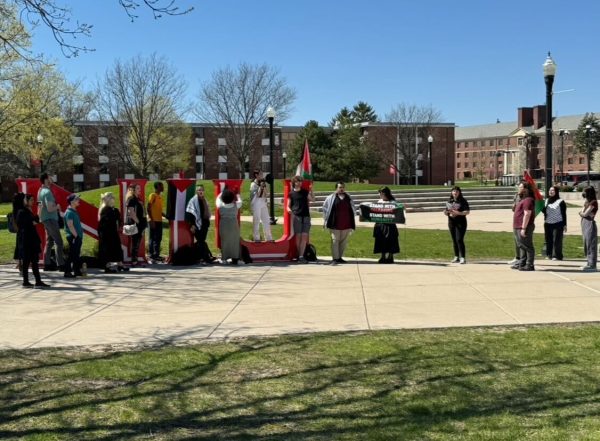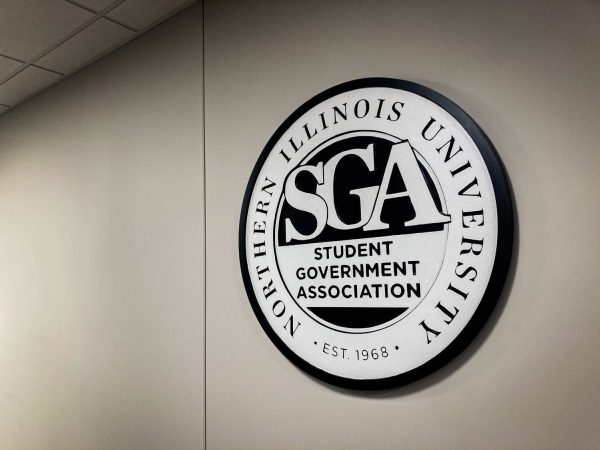Students celebrate St. Patrick
March 17, 2009
There are an estimated 33.7 million Americans who are of Irish descent. That is nine times the population of Ireland which stands at around 3.8 million. Most of these Irish-Americans, and many other nationalities, will be celebrating St. Patrick’s Day today.
“St. Pat’s is absolutely one of our busiest days of the year,” said Megan Ketchum, a manager at O’Leary’s Restaurant & Pub, 260 E. Lincoln Highway. “We have a variety of people with college students and townies both stopping by for corned beef and green draft beers.”
As these revelers raise their glasses in green-hued cheers, many do not know much about the man they are toasting.
“I don’t know anything about St. Patrick,” said Kacie Butler, junior elementary education major. “All I know is you are supposed to wear green on St. Patrick’s Day so you don’t get pinched.”
The patron saint of Ireland was not even Irish at all. He was born in Great Britain and was originally a pagan. As a teen, St. Patrick was captured and sold into slavery in Ireland. When he escaped, he joined the Catholic Church and went back to Ireland as a missionary.
St. Patrick is credited with bringing the Catholic Church to Ireland and establishing it in the fifth century. Prior to that, Ireland had been separated into many different tribes with different religions. St. Patrick united the tribes through Christianity. Because of his efforts to convert pagans to Christians, Patrick was one of Christianity’s first saints.
The legend of St. Patrick is enhanced by many myths. One of these myths is inspired by truth but misunderstood. Legends say that St. Patrick drove all the snakes off the island of Ireland. While St. Patrick never actually chased snakes around the Emerald Isle, he did his best to get rid of serpents. In religious text, pagans are often referred to as “serpents,” and through his conversion of pagans to Christianity, St. Patrick did indeed drive the snakes out of Ireland.
Another myth says that when Patrick was trying to convert a pagan tribe, the chief of the tribe tried to kill him. When the attack was made, the chief was unable to move his arm and did not regain its use until he became friendly with Patrick.
One popular legend that may be true involves one of the most recognized symbols of Ireland: the shamrock. It is believed that Patrick used the three-leaf shamrock to explain to the pagan tribes of Ireland the Christian Trinity of the Father, Son and Holy Spirit.
The first St. Patrick’s Day celebration on American soil was held in Boston in 1737. St. Patrick celebrations in America have mostly been about honoring the Irish culture and not focused on his impact on Christianity.
“St. Patrick really has little to do with religion in America,” said J.D. Bowers, assistant professor in the NIU history department. “He was seen as the protector of Irish immigrants. That’s about as far as it goes.”
Ketchum does not see much religion involved in the celebrations at O’Leary’s.
“We all get to dress in green, and it’s all about the fun,” Ketchum said. “The party will go on until we close.”













